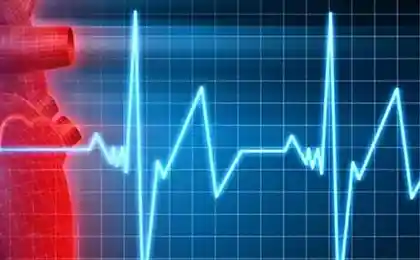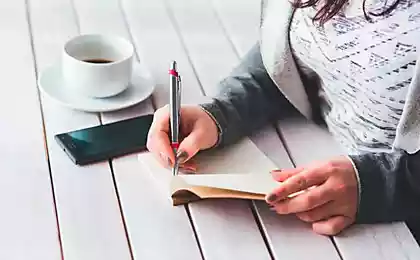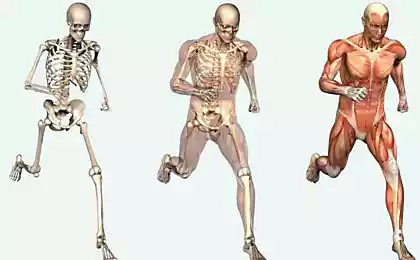753
Boron and chromium: the health of the endocrine glands and the optimum pressure
The trace element boron opened in the beginning of XIX century – in France and at the same time in England.
In nature it occurs in the form of salts, and its compounds are often used in industry: boron saturate the surface of steel products – this allows you to make them harder and more resistant to high temperatures and, therefore, boron is often used in the creation of missiles and nuclear reactors; chemical and glass industry also uses boron.
For plant growth boron is needed is scientists have understood at once: the shortage of forest plants are poorly developed, slowing their growth, there are different diseases.
Boron in the human bodythat this element is necessary for human health became known not so long ago, although boron compounds in medicine used: it is borax, boric acid, etc. boron Compounds can exert anti-inflammatory, anticancer, and hypolipidemic (normalizing fat metabolism) activity. For osteoporosis, skeletal fluorosis, arthritis in the early stages of epilepsy, doctors prescribe medications boron.

Bor is in all our bodies, but most of all his tooth enamel and bones. Newborns in plasma boron a lot, but in the first days of life, their number decreases rapidly. Boron is found in brain, muscles, lymph nodes, lungs, kidneys, liver, testes of males, and its beneficial effect on the body is very versatile.Due to the fact that boron normalizes the endocrine glands, it improves the exchange of magnesium, fluorine and calcium – elements that are the basic material for building bones and thus strengthens and improves the structure of the skeleton.
Sex hormones are also very important for bone and boron increases their levels in the body, and this is especially important for women in age of menopause. Vitamin D is converted in the body under the influence of boron, and it also helps the absorption of calcium. In General, for bone health boron is needed for sure, and many diseases of musculoskeletal apparatus are facilitated with additional use – for example, in the composition of vitamin-mineral complexes.
Boron regulates the activity of many enzymes, supports the normal metabolism of nucleic acids and involved in their education. This means that no boron cannot form proteins, and all of the tissues of the body would be unable without it to properly grow and be updated.
It is known that oxalates interact in the body with calcium and form kidney stones called oxalate – Bor reduces the amount of oxalates in the urine and thus prevents the development of kidney disease.
Boron in foods
Sources of boron for humans are mainly products of plant origin. It'snuts, legumes, prunes, pears, tomatoes, apples, grapes, dates, root vegetables, soybeans, raisins, honey, seafood, beer and red wine.
In fish, milk and meat of boron is very small.
It so happens that the source of boron is drinking water, and this causes very interesting effects: for example, in Israel, where water is rich in boron, only 10% of the population knows what diseases of the joints. And in countries where little boron in the water, and in products, arthritis and arthrosis ache to 70% of people.
Daily need in Bor
A day our body requires from 1 to 3 mg of boron. The minimum quantity of boron that must be ingested 0.2 mg; otherwise, there is a deficiency of this element. From 20 mg of boron contained in the body of an adult, the soft tissues accounts for only 10%, and more than half of it is in bones and hard tissues.
Bor is in blood plasma, adipose tissue, nervous tissue, thyroid and pancreas glands, spleen, kidneys, liver, lungs. In the world there are regions where the environment greatly increased the amount of this trace mineral is there in the human body daily gets up to 27 mg of boron and its concentration in blood can exceed the norm by 20 times or more.
Boron enters the body in several ways immediately:
Its derivatives are potent toxins – just some time to breathe the air polluted by compounds of boron to a moderate extent as immediately manifest irritation of eyes and throat. If contamination above affects the lungs.
I must say that when skin contact with boron no serious consequences, is not manifested if the concentration of boron is too high, it may be the irritation that takes place with the cessation of contact with the element.
Does not cause the boron and mutations – at least it shows who (world Health Organization), and are also not carcinogenic.
As a result of studies have shown that people can tolerate daily intakes of boron up to 88 mg per 1 kg of body weight. The content of boron in water should not exceed 0.3 mg per litre. The toxic dose for humans is considered to be 4 g of boron.
The excess boron
With an excess of boron in the body is dehydrated, severe symptoms appear: vomiting, diarrhea, scaly skin rash, anemia, confusion, lack of appetite, cachexia sharp weight loss, disappearance of subcutaneous fat, atrophy of organs and muscles, hair loss and sagging skin.
In such cases it is necessary to drastically reduce the intake of boron in the body, and immediately begin treatment, contact a specialist.
Boron deficiency
As for the lack of boron, it is very rare, and little studied. Mostly these experiments were carried out on chickens, showed that the lack of this trace element causes a delay in growth.
Some researchers described the symptoms of boron deficiency, and find out what diseases are treatable with it.
When deficiency of boron causes malfunctioning of the endocrine glands, and as a consequence, there is a hormonal imbalance in the body. There is evidence that this imbalance, in turn, causes a number of serious diseases in women – this erosion, polikistoz, fibroids, breast and even cancer of the female organs.
Boron deficiency causes osteoporosis and increases the symptoms of menopause; triggers kidney stones and diseases of the joints.
On the activity of the brain and nervous system boron deficiency also affects: people can't concentrate on one thing, they have slowed down the reaction and dissipates attention. They can't perform even the simplest motor tasks, and these symptoms can be seen with the help of devices that read brain activity.
In humans boron interacts with other substances. The absorption of flavonoids and vitamin C it slows down, and the effects of alcohol and drugs may increase. Some experts have tried to apply the Bor to excrete excess copper, the absorption of zinc, the boron, in contrast, can contribute.
Deficiency of boron to make up for not so difficult, if he shows up: you just need to eat more foods, in which its content is high , is leafy vegetables, fruits, herbs, nuts – provided that the soil in which they grew rich in boron. Cider, organic beer and wine also contain a lot of boron, but dairy, fish and meat products will help not too.
In a pinch, you can use the drugs Bor, but only after consultation with your doctor.
Chromium in the human body
Glucose metabolism: chromium is included in the compound, which is called the tolerance factor to glucose. It interacts with insulin, transportorul glucose into cells for energy production, providing the normal amount of glucose in the blood, and acts as a regulator of blood sugar.

The consumption of optimum amounts of chromium leads to a decrease in the content of insulin. The interaction of chromium with insulin activates the production of protein.
Nucleic acid: chromium maintains the structural integrity of the RNA, DNA, protects it from degradation as a component.
Cardiovascular system: chromium is involved in fat metabolism, coordinates the content of cholesterol in the blood. He is also involved in the process of regulation of work of heart, blood vessels. Helps to maintain optimal blood pressure.
Other functions: promotes the excretion of toxic substances, radionuclides.
In the body there are two forms of chromium: trivalent and hexavalent.
The average norm of chromium in the diet of 50 µg, the maximum is 250 mcg. For many people, adequate consumption of chromium is 25-35 mcg.
The effects of stress, increased consumption of simple carbohydrates, strenuous physical activity, traumatic injury, infection, increase normal chromium, which is in such cases, 150 – 200 micrograms.
Chromium in food products
In food chromium content is low, the sources of the trace mineral:
Chromium absorbed in the middle section of the small intestine is 0.5 — 1%. Normal diet is slightly higher than the lower limit of normal trace element.
The lack of chrome
The reasons for the lack of chrome:
The deficiency symptoms of chromium:
Toxic dose per day of hexavalent chromium — 5 mg, trivalent 200 mg, lethal is considered to be more than 3.0 g.
Trivalent chromium only with the consumption of extremely high doses it begins to show Toxicological effect, but more as a gastric irritant.
Hexavalent chromium is a carcinogen of class I danger. After prolonged contact within 15 – 20 years with a high content of chromate there is a tumor of the lungs.
The heavy impact of hexavalent chromium:
Causes of excess chromium
1. The surplus received from the outside in various ways:
2. Metabolic chromium.
Symptoms of excess chromium
P. S. And remember, only by changing their consumption — together we change the world! ©
Source: www.orthodox.od.ua/statiy/13602-bor-i-hrom-v-organizme-cheloveka.html
In nature it occurs in the form of salts, and its compounds are often used in industry: boron saturate the surface of steel products – this allows you to make them harder and more resistant to high temperatures and, therefore, boron is often used in the creation of missiles and nuclear reactors; chemical and glass industry also uses boron.
For plant growth boron is needed is scientists have understood at once: the shortage of forest plants are poorly developed, slowing their growth, there are different diseases.
Boron in the human bodythat this element is necessary for human health became known not so long ago, although boron compounds in medicine used: it is borax, boric acid, etc. boron Compounds can exert anti-inflammatory, anticancer, and hypolipidemic (normalizing fat metabolism) activity. For osteoporosis, skeletal fluorosis, arthritis in the early stages of epilepsy, doctors prescribe medications boron.

Bor is in all our bodies, but most of all his tooth enamel and bones. Newborns in plasma boron a lot, but in the first days of life, their number decreases rapidly. Boron is found in brain, muscles, lymph nodes, lungs, kidneys, liver, testes of males, and its beneficial effect on the body is very versatile.Due to the fact that boron normalizes the endocrine glands, it improves the exchange of magnesium, fluorine and calcium – elements that are the basic material for building bones and thus strengthens and improves the structure of the skeleton.
Sex hormones are also very important for bone and boron increases their levels in the body, and this is especially important for women in age of menopause. Vitamin D is converted in the body under the influence of boron, and it also helps the absorption of calcium. In General, for bone health boron is needed for sure, and many diseases of musculoskeletal apparatus are facilitated with additional use – for example, in the composition of vitamin-mineral complexes.
Boron regulates the activity of many enzymes, supports the normal metabolism of nucleic acids and involved in their education. This means that no boron cannot form proteins, and all of the tissues of the body would be unable without it to properly grow and be updated.
It is known that oxalates interact in the body with calcium and form kidney stones called oxalate – Bor reduces the amount of oxalates in the urine and thus prevents the development of kidney disease.
Boron in foods
Sources of boron for humans are mainly products of plant origin. It'snuts, legumes, prunes, pears, tomatoes, apples, grapes, dates, root vegetables, soybeans, raisins, honey, seafood, beer and red wine.
In fish, milk and meat of boron is very small.
It so happens that the source of boron is drinking water, and this causes very interesting effects: for example, in Israel, where water is rich in boron, only 10% of the population knows what diseases of the joints. And in countries where little boron in the water, and in products, arthritis and arthrosis ache to 70% of people.
Daily need in Bor
A day our body requires from 1 to 3 mg of boron. The minimum quantity of boron that must be ingested 0.2 mg; otherwise, there is a deficiency of this element. From 20 mg of boron contained in the body of an adult, the soft tissues accounts for only 10%, and more than half of it is in bones and hard tissues.
Bor is in blood plasma, adipose tissue, nervous tissue, thyroid and pancreas glands, spleen, kidneys, liver, lungs. In the world there are regions where the environment greatly increased the amount of this trace mineral is there in the human body daily gets up to 27 mg of boron and its concentration in blood can exceed the norm by 20 times or more.
Boron enters the body in several ways immediately:
- when working in the relevant industries, living close to such enterprises;
- with food and water;
- with detergents and even cosmetics, although this probability is very small.
Its derivatives are potent toxins – just some time to breathe the air polluted by compounds of boron to a moderate extent as immediately manifest irritation of eyes and throat. If contamination above affects the lungs.
- When boron enters the inside, with water or food, it is rapidly absorbed and excreted through the kidneys;
- but, if for even a short time to use boron in increased amounts, it irritated the stomach and intestines;
- if the use of the Bor to continue, will develop a chronic problem of digestion – boric enteritis, intoxication will affect kidney, liver and nervous system.
I must say that when skin contact with boron no serious consequences, is not manifested if the concentration of boron is too high, it may be the irritation that takes place with the cessation of contact with the element.
Does not cause the boron and mutations – at least it shows who (world Health Organization), and are also not carcinogenic.
As a result of studies have shown that people can tolerate daily intakes of boron up to 88 mg per 1 kg of body weight. The content of boron in water should not exceed 0.3 mg per litre. The toxic dose for humans is considered to be 4 g of boron.
The excess boron
With an excess of boron in the body is dehydrated, severe symptoms appear: vomiting, diarrhea, scaly skin rash, anemia, confusion, lack of appetite, cachexia sharp weight loss, disappearance of subcutaneous fat, atrophy of organs and muscles, hair loss and sagging skin.
In such cases it is necessary to drastically reduce the intake of boron in the body, and immediately begin treatment, contact a specialist.
Boron deficiency
As for the lack of boron, it is very rare, and little studied. Mostly these experiments were carried out on chickens, showed that the lack of this trace element causes a delay in growth.
Some researchers described the symptoms of boron deficiency, and find out what diseases are treatable with it.
When deficiency of boron causes malfunctioning of the endocrine glands, and as a consequence, there is a hormonal imbalance in the body. There is evidence that this imbalance, in turn, causes a number of serious diseases in women – this erosion, polikistoz, fibroids, breast and even cancer of the female organs.
Boron deficiency causes osteoporosis and increases the symptoms of menopause; triggers kidney stones and diseases of the joints.
On the activity of the brain and nervous system boron deficiency also affects: people can't concentrate on one thing, they have slowed down the reaction and dissipates attention. They can't perform even the simplest motor tasks, and these symptoms can be seen with the help of devices that read brain activity.
In humans boron interacts with other substances. The absorption of flavonoids and vitamin C it slows down, and the effects of alcohol and drugs may increase. Some experts have tried to apply the Bor to excrete excess copper, the absorption of zinc, the boron, in contrast, can contribute.
Deficiency of boron to make up for not so difficult, if he shows up: you just need to eat more foods, in which its content is high , is leafy vegetables, fruits, herbs, nuts – provided that the soil in which they grew rich in boron. Cider, organic beer and wine also contain a lot of boron, but dairy, fish and meat products will help not too.
In a pinch, you can use the drugs Bor, but only after consultation with your doctor.
Chromium in the human body
Glucose metabolism: chromium is included in the compound, which is called the tolerance factor to glucose. It interacts with insulin, transportorul glucose into cells for energy production, providing the normal amount of glucose in the blood, and acts as a regulator of blood sugar.

The consumption of optimum amounts of chromium leads to a decrease in the content of insulin. The interaction of chromium with insulin activates the production of protein.
Nucleic acid: chromium maintains the structural integrity of the RNA, DNA, protects it from degradation as a component.
Cardiovascular system: chromium is involved in fat metabolism, coordinates the content of cholesterol in the blood. He is also involved in the process of regulation of work of heart, blood vessels. Helps to maintain optimal blood pressure.
Other functions: promotes the excretion of toxic substances, radionuclides.
In the body there are two forms of chromium: trivalent and hexavalent.
- Trivalent chromium involved in the coordination of metabolism of carbohydrates and fats, lowering the amount of cholesterol in the blood.
- Hexavalent chromium is much more toxic, connecting with Cr 6+, able to provoke carcinogenic and mutagenic effects. However, is absorbed in the body it 3 to 5 times better than trivalent.
The average norm of chromium in the diet of 50 µg, the maximum is 250 mcg. For many people, adequate consumption of chromium is 25-35 mcg.
The effects of stress, increased consumption of simple carbohydrates, strenuous physical activity, traumatic injury, infection, increase normal chromium, which is in such cases, 150 – 200 micrograms.
Chromium in food products
In food chromium content is low, the sources of the trace mineral:
- vegetables, legumes, fruits and berries;
- products whole grain (including bran);
- herbs: lemon balm, Ginkgo biloba, marsh cudweed;
- meat, beef liver, eggs;
- dairy products (cheese);
- fish, shrimp, crabs;
- brewer's yeast.
Chromium absorbed in the middle section of the small intestine is 0.5 — 1%. Normal diet is slightly higher than the lower limit of normal trace element.
The lack of chrome
The reasons for the lack of chrome:
- Unsatisfactory receipt quantity of mineral substances.
- Metabolic chromium.
- Increased consumption of micronutrient during pregnancy, under the influence of stress, disease (infections, injury, surgery).
- Intensive excretion of chromium from the body in connection with a high content in the diet of carbohydrates – excessive consumption of sweets, pasta, white bread.
- Increased excretion of chromium in the urine as a consequence of elevated physical activity.
The deficiency symptoms of chromium:
- Headaches, weakness, fatigue, anxiety, insomnia.
- Neuralgia, loss of sensitivity of extremities.
- Raskoordinatsiya muscle, the appearance of tremor in the limbs.
- The increase in the content of cholesterol and triglycerides in the blood increases the possibility of atherosclerosis.
- Increase the risk for coronary heart disease.
- Weight changes – loss of body mass, obesity.
- Syndrome, disorders of glucose tolerance, especially in elderly and middle-aged.
- Changes in the content of glucose in the blood, increasing blood sugar levels (hyperglycemia), decrease amounts of sugar (hypoglycemia), increase the likelihood of developing diabetes.
- Disorders of the reproductive system in men.
Toxic dose per day of hexavalent chromium — 5 mg, trivalent 200 mg, lethal is considered to be more than 3.0 g.
Trivalent chromium only with the consumption of extremely high doses it begins to show Toxicological effect, but more as a gastric irritant.
Hexavalent chromium is a carcinogen of class I danger. After prolonged contact within 15 – 20 years with a high content of chromate there is a tumor of the lungs.
The heavy impact of hexavalent chromium:
- modifying the immunological response of the organism;
- by inhibiting (slowing the activity) of enzymes;
- hitting the liver;
- breaking the processes of biological oxidation — citric acid cycle;
- causing pulmonary fibrosis, heart disease, gastritis, gastric ulcer and duodenal ulcers, skin lesions (ulcers, dermatitis), the expression of the nasal mucosa, chrome steatosis.
Causes of excess chromium
1. The surplus received from the outside in various ways:
- the high content of chromium in the air;
- excessive intake of chromium-containing dietary SUPPLEMENTS;
- intense absorption of trace elements in iron deficiency and zinc.
2. Metabolic chromium.
Symptoms of excess chromium
- Disease of an inflammatory nature with a tendency to the process of ulceration of the mucous membranes (nasal septum).
- Allergic diseases: bronchial asthma, asthmatic bronchitis, dermatitis, eczema.
- Neurasthenia.
- To increase the likelihood of developing cancer.published
P. S. And remember, only by changing their consumption — together we change the world! ©
Source: www.orthodox.od.ua/statiy/13602-bor-i-hrom-v-organizme-cheloveka.html























